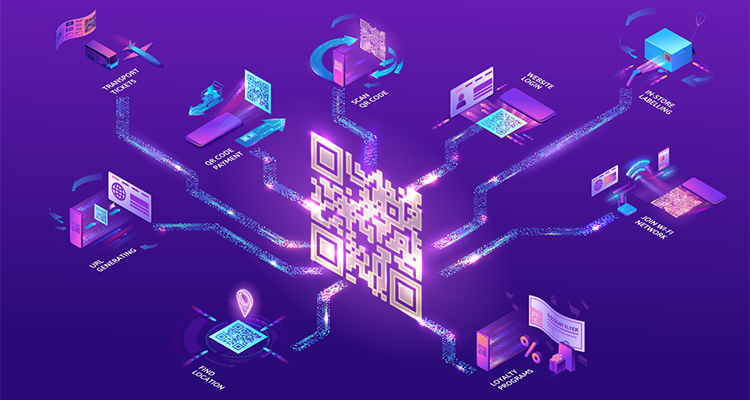The next layer in the fight against counterfeit products By Judy Moon
Counterfeiting is a serious problem. While estimates vary, the total amount of counterfeit goods sold each year comes in at around $1.7 trillion to $4.5 trillion, which would make counterfeiting at least the tenth largest economy.
Fueling the issue is the global economic downturn – with shoppers looking for affordable alternatives, and thus making themselves vulnerable to scammers peddling counterfeit goods via bogus websites and third-party listings on popular e-commerce sites such as Amazon, eBay and Alibaba. As a result of this deceptive practice, customers end up paying more money than necessary in order to acquire imitation designer items – leaving retailers and brands out of the equation entirely.

And without proper security and tracking measures, consumers rapidly lose trust in brands to protect their customers from theft. IP and brand protection company IncoPro found that 52 percent of consumers lost trust in a brand after purchasing a fake good online, and 64 percent lost trust in online marketplaces.
Counterfeiting causes untold damage for economies
According to the Organisation for Economic Co-operation and Development data, the value of counterfeit and pirated goods sky-rocketed from 2013 to 2022, nearly tripling at an estimated $3 trillion. This has had a dramatic financial impact on legitimate retailers resulting in huge losses of profits, as well as reduced job opportunities. Counterfeiting of products directly damages the sales of an economy which in turn translates into losing jobs.
As per European Union Intellectual Property Office (EUIPO), IPR infringement in the EU member states causes an average of 7.4 percent sales loss annually. Translating this number into jobs lost and those which were not created due to IPR infringement results in roughly 800,000 jobs annually.
So what can manufacturers do to help stem the tide?
To safeguard customers and maintain brand integrity, companies must adopt effective countermeasures. Digital watermarks, supply chain transparency and trust-building strategies to name a few. But digital identity, in the form of RFID tags and digital IDs, can be a game-changer.
RFID tags are small chip-like devices that are affixed to items in order to track them through the supply chain. Once embedded onto an item, it’s nearly impossible to remove or tamper with without damaging the tag itself. This ensures that each product is authenticated and traceable, making it easier to identify any counterfeit items that may have slipped into the supply chain.
Additionally digital IDs combined with the product cloud provide an added layer of product authentication directly on the product packaging. Consumers can verify a product’s authenticity by simply scanning the QR code or NFC tag on the packaging. Some manufacturers of electronic and luxury goods are offering consumers digital warranties so product authenticity can be verified throughout the product lifecycle.
Product digitization is bringing traceability to the masses
In essence, product digitization means that each product is given a unique identifier, which could be a digital watermark, QR code, NFC tag, or RFID tag. This identifier allows the product data to be captured in the product cloud throughout its journey. Product digitization, AI and
connected packaging are no longer ideas being piloted on a few unique product items in select target markets.
Connected packaging is becoming the norm as brands strive to meet consumer demand for authenticity, transparency and personalized experiences. Through the digitization of products at scale and the use of AI and machine learning, brands and retailers not only have a powerful competitive weapon to build direct-to-consumer relationships, but also gain access to unprecedented amounts of data whilst battling counterfeit products.
Furthermore, digitizing products aids brands in monitoring their inventory without delay, thereby lessening the chance of product diversion. Product diversion is when a product gets rerouted from its designated sales path to an unauthorized one. This could be anything from selling products on the black market to selling products past their expiration date. Product diversion not only hurts a brand’s bottom line but also damages its reputation. Product digitization can help brands keep tabs on their product inventory, ensuring that each product is going where it’s supposed to and being sold by authorized retailers.

By implementing digital watermarks, RFID tags or digital IDs into its product supply chain, a company can protect its customers from purchasing counterfeit items while safeguarding its own brand integrity. Ultimately product digitization offers brands peace of mind knowing that their products are not only genuine and verifiable, but also traceable from the moment they leave the factory until they reach the consumer. Brands can rest easy knowing that their products are safe and secure throughout the entire value chain.
Manufacturers must take ownership of the challenge posed by counterfeiting and take steps to protect their business, customers and brand equity. Combining covert digital watermarks with serialized QR codes and the product cloud, provides brands with a powerful weapon against counterfeiters, helping to identify potential threats quickly, prevent fraudulent activity and build trust with customers.
Let’s remember that the consequences of counterfeiting for brands are considerable. Maintaining consumer confidence and trust is crucial for growth. So, it is vital for retailers and consumer product manufacturers to keep up with the latest technology and develop a comprehensive anti-counterfeiting strategy that prioritizes resilience and transparency.
For a list of the sources used in this article, please contact the editor.
Judy Moon is VP, Global Head of Revenue at Digimarc, a global leader in product digitization, providing unique identities and cloud-based solutions that collaborate with applications and machines to deliver business value.
